
Jo Davidson was an American sculptor. Although he specialized in realistic, intense portrait busts, Davidson did not require his subjects to formally pose for him; rather, he observed and spoke with them. He worked primarily with clay, while the final products were typically cast in terra-cotta or bronze, or carved from marble.
Paul Jenkins was an American abstract expressionist painter.
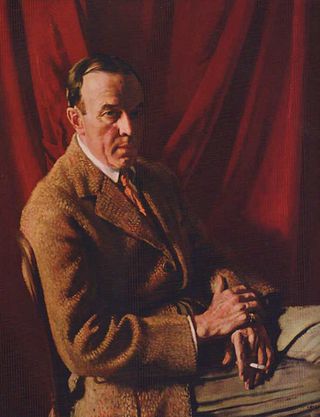
Stephen Carlton Clark was an American art collector, businessman, newspaper publisher and philanthropist. He founded the Baseball Hall of Fame in Cooperstown, New York.
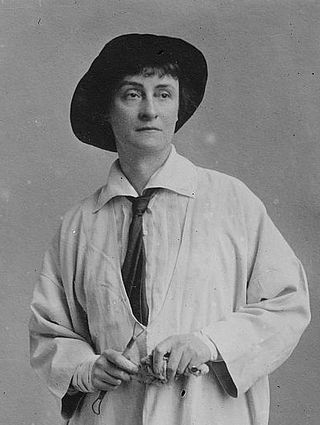
Janet Scudder, born Netta Deweze Frazee Scudder, was an American sculptor and painter from Terre Haute, Indiana, who is best known for her memorial sculptures, bas-relief portraiture, and portrait medallions, as well as her garden sculptures and fountains. Her first major commission was the design for the seal of the New York Bar Association around 1896. Scudder's Frog Fountain (1901) led to the series of sculptures and fountains for which she is best known. Later commissions included a Congressional Gold Medal honoring Domício da Gama and a commemorative medal for Indiana's centennial in 1916. Scudder also displayed her work at numerous national and international exhibitions in the United States and in Europe from the late 1890s to the late 1930s. Scudder's autobiography, Modeling My Life, was published in 1925.

Henry Hering was an American sculptor.

Chauncey Bradley Ives was an American sculptor who worked primarily in the Neo-classic style. His best known works are the marble statues of Jonathan Trumbull and Roger Sherman enshrined in the National Statuary Hall Collection.
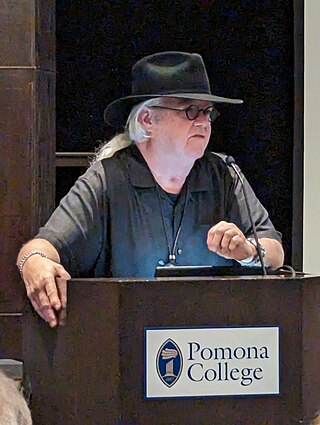
Peter Shelton is a contemporary American sculptor born in 1951 in Troy, Ohio.

StudioEIS is a sculpture and design studio in Brooklyn, New York, United States. It specializes in classical figurative sculpture and visual storytelling with production in bronze, stone, and resin for exhibitions at cultural institutions, museums, and corporations worldwide.
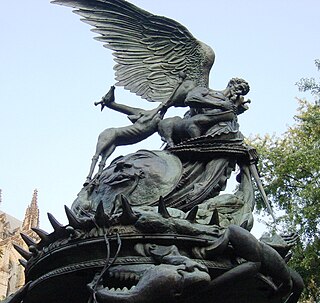
Greg Wyatt is an American representational sculptor who works primarily in cast bronze, and is the sculptor-in-residence at the Cathedral Church of St. John the Divine in New York City.

Zenos Frudakis, known as Frudakis, is an American sculptor whose diverse body of work includes monuments, memorials, portrait busts and statues of living and historic individuals, military subjects, sports figures and animal sculpture. Over the past four decades he has sculpted monumental works and over 100 figurative sculptures included within public and private collections throughout the United States and internationally. Frudakis currently lives and works near Philadelphia, and is best known for his sculpture Freedom, which shows a series of figures breaking free from a wall and is installed in downtown Philadelphia. Other notable works are at Arlington National Cemetery in Virginia, Brookgreen Gardens in South Carolina, the National Academy of Design, and the Lotos Club of New York City, the Imperial War Museum in England, the Utsukushi ga-hara Open Air Museum in Japan, and the U.S. Embassy in Pretoria, South Africa.

Anatomy Vessels (Saplings), 2003–05, is a public sculpture created by Indiana-based artist Eric Nordgulen (American born 1959), Associate Professor of Sculpture at Herron School of Art and Design. The sculpture is located on the Indiana University-Purdue University Indianapolis (IUPUI) campus at the Herron School of Art and Design, 735 W. New York Street in Indianapolis, Indiana in the United States. It was selected in 2005 for the Herron Gallery first Sculpture Biennial Invitational to be exhibited in the Herron Sculpture Gardens. The two-part cast and fabricated bronze sculpture represents two life size sapling trees with bound root balls.

Spaces with Iron is a public sculpture by American artist Will Horwitt. It was installed in January 2009 on the Indiana University-Purdue University Indianapolis (IUPUI) campus, near downtown Indianapolis, Indiana. The sculpture is located at the corner of Blackford and Vermont Streets, on the southeast lawn of the Science Building, and is on long-term loan from the Indianapolis Museum of Art.
Portrait of History, a public sculpture by Chinese American artists Zhou Brothers, is located on the Indiana University-Purdue University Indianapolis campus, which is near downtown Indianapolis, Indiana. The sculpture is located at the Blackford Street entrance to the Herron School of Art and Design. This piece is one of four public artworks on loan from the Indianapolis Museum of Art to IUPUI. The artworks were moved to the campus on March 22, 2009. Portrait of History is a bronze sculpture measuring 100 x 24 x 30 in and is mounted on an oval cement base.

Brenda Putnam was an American sculptor, teacher and author.
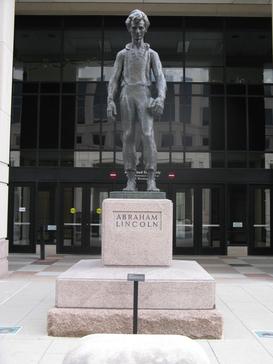
Young Abe Lincoln, is a 1962 public artwork by American artist David K. Rubins, located outside of the government center near the Indiana State House, in Indianapolis, Indiana, US. This bronze sculpture is a depiction of a young Abraham Lincoln, an Abraham Lincoln that spent the majority of his formative years in Indiana.

David Kresz Rubins (1902–1985) was an American sculptor and professor. He taught at Herron School of Art in Indianapolis and his various works adorn the Indiana State House, the American Museum of Natural History in New York, and the National Archives building in Washington, D.C.
Peter Grippe was an American sculptor, printmaker, and painter. As a sculptor, he worked in bronze, terracotta, wire, plaster, and found objects. His "Monument to Hiroshima" series (1963) used found objects cast in bronze sculptures to evoke the chaotic humanity of the Japanese city after its incineration by atomic bomb. Other Grippe Surrealist sculptural works address less warlike themes, including that of city life. However, his expertise extended beyond sculpture to ink drawings, watercolor painting, and printmaking (intaglio). He joined and later directed Atelier 17, the intaglio studio founded in London and moved to New York at the beginning of World War II by its founder, Stanley William Hayter. Today, Grippe's 21 Etchings and Poems, a part of the permanent collection at the Davis Museum and Cultural Center at Wellesley College in Wellesley, Massachusetts, is available as part of the museum's virtual collection.

Stumbling Man is an outdoor sculpture by American artist David K. Rubins (1902–1985) located on the grounds of the Indianapolis Museum of Art (IMA), which is near downtown Indianapolis, Indiana. The sculpture is cast bronze and is in the shape of a man crouched upon the ground.
Socrates is an outdoor sculpture by artist W. V. Casey created c. 1950. The work is on the grounds of Butler University in Indianapolis, Indiana, United States. The sculpture depicts the Greek Athenian philosopher Socrates. In 1993 the sculpture was examined by the Save Outdoor Sculpture! program produced by the Smithsonian Institution.
Rhoda Sherbell is a contemporary American sculptor, consultant, and teacher whose work is displayed in prominent institutions and has won many awards.















